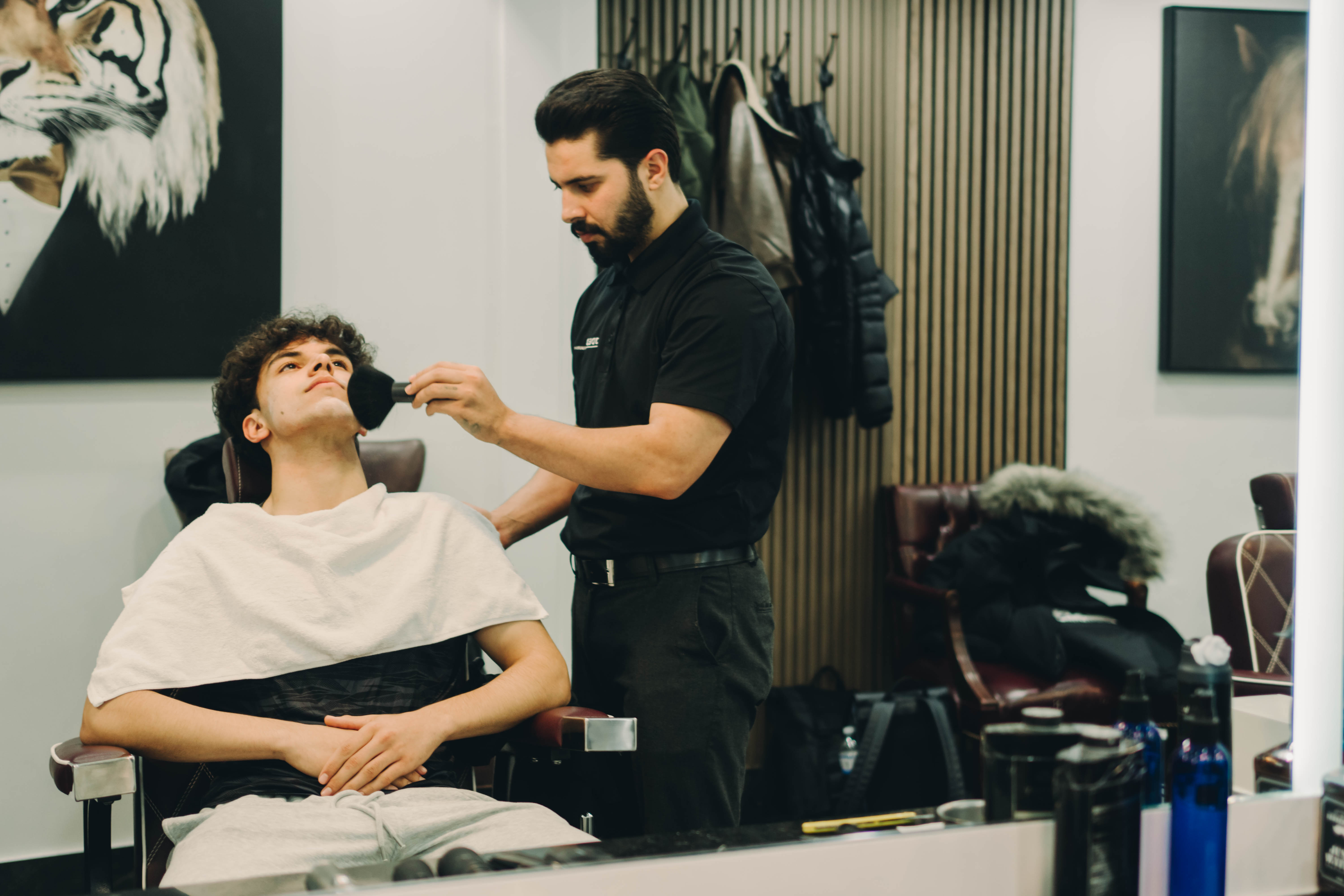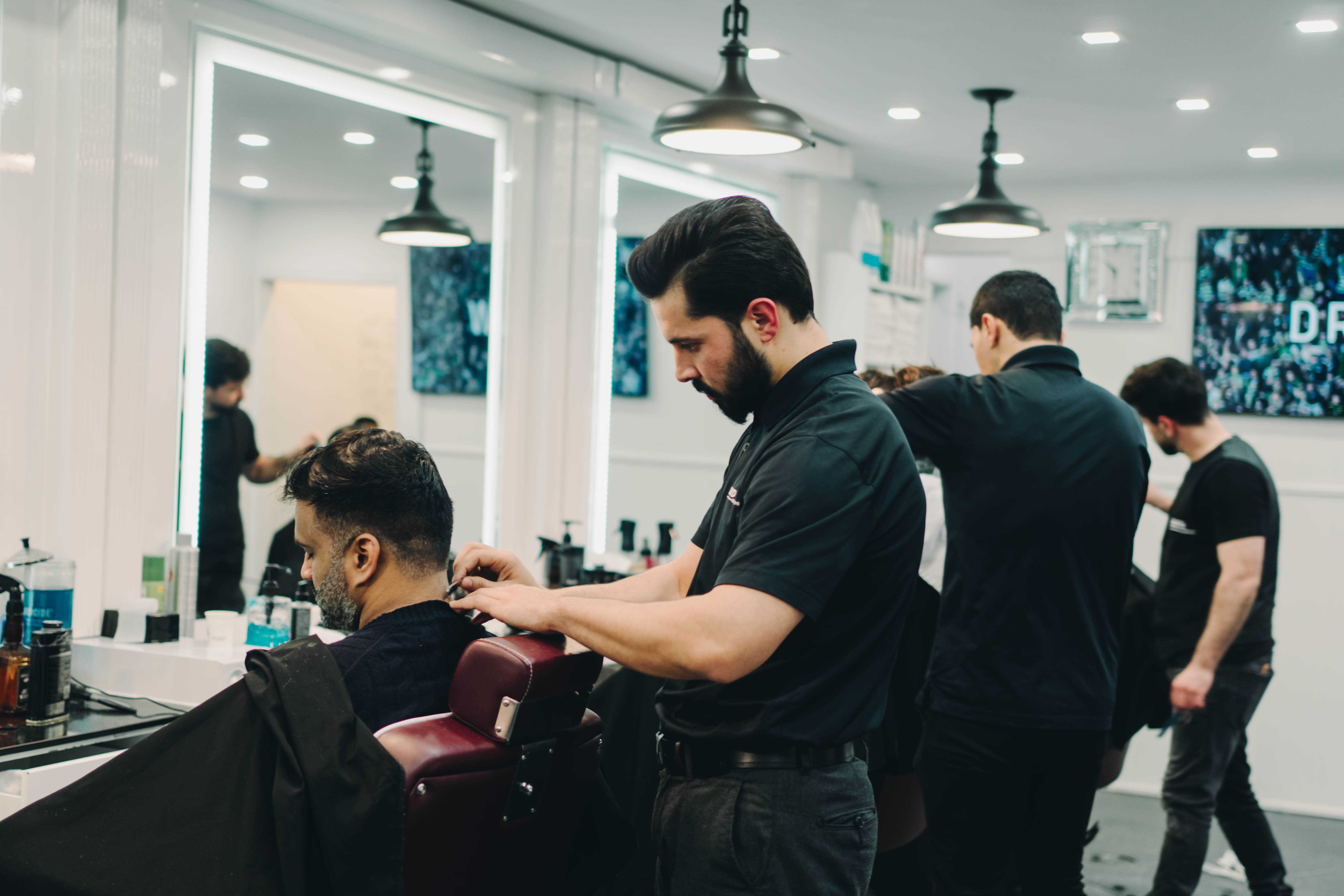Winter in Toronto is brutal on your scalp. The freezing cold outside sucks all the moisture out of the air. Then you walk into overheated buildings with dry, recycled air blasting from vents. Your scalp doesn't know what's happening, so it freaks out—gets dry, flaky, itchy, and generally miserable.
Most guys ignore it until it gets really bad. Then they panic-buy some random dandruff shampoo that doesn't work, or worse, makes things worse. By February, their scalp is a disaster and they're wearing hats indoors to hide it.
Here's how to actually fix it before it gets to that point.
Why Toronto Winter Destroys Your Scalp
Let's start with what's actually happening up there.
The cold air outside has almost no moisture. Cold air can't hold water vapor the way warm air can. When you're outside in Toronto winter, you're basically in a desert for your scalp.
Indoor heating is even worse. Forced air heating dries out the air in your home and office. You're spending most of your time in artificially dried environments.
Hot showers make it worse. When it's freezing outside, you want a hot shower. But hot water strips the natural oils from your scalp, leaving it even drier.
Hats create their own problems. You need a hat to survive Toronto winter, but wearing one all the time traps sweat and oil, which can cause buildup and irritation.
Your scalp overcompensates. When your scalp gets too dry, it sometimes produces extra oil to compensate. Now you've got dry, flaky skin and greasy hair at the same time. It's a mess.
Static electricity is real. Dry air plus certain materials (like those cheap toques from the dollar store) create static that makes your hair stand up and look ridiculous.
All of this compounds over the winter months. By January, your scalp is crying for help.
The Foundation: Fix Your Shower Routine
This is where most guys go wrong. Your shower routine in winter needs to be different from summer.
Lower the water temperature. I know it sucks when it's -20 outside, but scalding hot showers are killing your scalp. Go for warm, not hot. Your scalp will thank you.
Wash your hair less often. In summer you might wash daily. In winter, every other day or even every third day is better. Your scalp needs to keep some of its natural oils.
Use the right shampoo. Regular shampoo is too harsh for winter. You need something gentler—sulfate-free is better. Look for shampoos with moisturizing ingredients, not stripping ones.
Don't skip conditioner. Guys skip this all the time. Don't. Conditioner replaces moisture that shampooing removes. Use it every time you shampoo, focusing on your hair and scalp.
Rinse with cool water. At the end of your shower, rinse your hair with the coolest water you can stand. This closes your hair cuticles and your pores, sealing in moisture.
Pat dry, don't rub. Rubbing your hair and scalp with a towel creates friction and irritation. Pat it dry gently instead.
These changes alone will prevent a lot of winter scalp problems. But if you're already dealing with issues, you need more.
The Rescue Protocol: Week One
If your scalp is already dry, flaky, and itchy, here's your week-one action plan.
Day 1-2: Stop everything harsh. No regular shampoo, no hot water, no scratching. Give your scalp a break from anything that's irritating it.
Day 1: Oil treatment before bed. Get some jojoba oil or argan oil (drugstore is fine). Warm it slightly in your hands. Massage it into your scalp—not your hair, your actual scalp. Leave it overnight. Sleep on an old pillowcase you don't care about.
Day 2 morning: Gentle cleanse. Wash out the oil with lukewarm water and a gentle, sulfate-free shampoo. Don't scrub hard. Massage gently with your fingertips, not your nails.
Day 3-4: Moisturize consistently. After your shower, while your scalp is still slightly damp, apply a light scalp oil or leave-in treatment. Not a lot—just enough to keep moisture locked in.
Day 5-7: Assess and adjust. By the end of week one, your scalp should feel less tight and itchy. If you're still seeing a lot of flakes, you might need to address buildup (more on that next).
Throughout the week: Drink more water. Your scalp is skin. Skin needs hydration from the inside too. Drink way more water than you think you need.
Week one is about rescue and relief. You're not fixing everything yet—you're just stopping the damage and giving your scalp what it desperately needs.
The Rescue Protocol: Week Two
Week two is about addressing specific problems and building better habits.
Deal with product buildup. Winter means more product use (to deal with static and dryness), which means more buildup. Once a week, use a clarifying shampoo to strip everything off your scalp. Then immediately follow with deep conditioning.
Exfoliate your scalp. Get a scalp scrub or make your own (mix brown sugar with your conditioner). Gently massage it into your scalp in the shower once or twice a week. This removes dead skin cells and product buildup that regular shampooing misses.
Add a scalp serum. There are specific serums designed for dry, irritated scalps. Apply them after you shower while your hair is still damp. They're more targeted than just using oil.
Upgrade your products. If you're still using whatever shampoo was on sale, stop. Invest in proper winter hair products—moisturizing shampoo, good conditioner, and a leave-in treatment.
Start supplements if needed. Omega-3s, biotin, and vitamin D all support scalp health. Toronto winters are dark and we don't get enough vitamin D. Consider supplementing, but check with a doctor first.
Humidify your bedroom. Get a humidifier and run it while you sleep. Dry air while you're sleeping for 8 hours is killing your scalp. Adding moisture to your bedroom air makes a huge difference.
By week two, you should see real improvement. Less flaking, less itching, your scalp feeling more normal. If you're not seeing improvement, you might have a bigger issue that needs professional attention.
The Maintenance Plan: Keeping Your Scalp Healthy All Winter
Once you've rescued your scalp, you need to maintain it through the rest of winter. Here's your ongoing routine.
Wash schedule: Every 2-3 days. Find what works for your hair type and stick to it. Consistency matters more than frequency.
Product rotation: Weekly clarifying. One day a week, use a clarifying shampoo to prevent buildup. The other days, use your moisturizing shampoo.
Oil treatment: Twice a month. Every two weeks, do an overnight oil treatment. It's preventive maintenance for your scalp.
Scalp massage: Daily. Spend two minutes in the shower massaging your scalp with your fingertips. This stimulates blood flow and distributes natural oils.
Leave-in treatment: After every wash. Make this part of your routine. It takes ten seconds and prevents your scalp from drying out between washes.
Diet matters: Eat healthy fats. Omega-3s from fish, nuts, and seeds support scalp health from the inside. Your winter diet affects your scalp more than you think.
Hydration: Constant. Keep a water bottle at your desk. Drink throughout the day. Your scalp is the last place your body sends moisture, so you need to over-hydrate to make sure it gets enough.
This maintenance plan prevents the rescue protocol from needing to happen again. You're staying ahead of winter instead of reacting to it.
The Hat Situation
You can't avoid hats in Toronto winter, but you can manage them better.
Choose the right materials. Cotton-lined hats are better than synthetic. Wool is good if you're not sensitive to it. Avoid cheap acrylic toques—they create static and trap moisture weirdly.
Don't wear your hat indoors longer than necessary. Take it off as soon as you're inside. Wearing a hat all day traps oil and sweat against your scalp.
Wash your hats regularly. Your hat absorbs sweat, oil, and dead skin. If you're wearing a dirty hat every day, you're putting all that back on your scalp. Wash your hats weekly.
Have multiple hats. Rotate between them so you're not wearing the same one every day. This gives each hat time to air out.
Apply scalp treatment before putting your hat on. A light scalp oil or serum before you put your hat on creates a protective barrier.
When you take your hat off, run your fingers through your hair. This redistributes oils and reduces the flat, hat-hair look that makes you want to keep your hat on.
Hats are necessary survival equipment in Toronto. Just manage them properly so they're not creating scalp problems.
When It's Not Just Dry Scalp
Sometimes what you think is winter dryness is actually something else.
Seborrheic dermatitis looks like dandruff but isn't. It causes red, greasy-looking scales and can be itchy. Regular anti-dandruff treatments might not help. You need medicated shampoo.
Psoriasis causes thick, silvery scales. If your flakes are thick and you see red patches, it might be psoriasis, not just dryness. This needs medical treatment.
Fungal issues can look like dry scalp. If your scalp is itchy, flaky, and has a weird smell, you might have a fungal overgrowth. Anti-fungal shampoo helps, but see a doctor if it's persistent.
Eczema on your scalp is different from general dryness. It's usually itchier, can weep or crust over, and might be in patches rather than all over.
If nothing is working after three weeks, see a dermatologist. Don't keep trying random products. If your scalp isn't improving with proper care, there might be an underlying condition that needs professional treatment.
Most guys deal with regular winter dryness. But if your situation is more extreme, get it checked out.
The Products That Actually Work
Let's talk specifics about what to buy, because walking into a drugstore and staring at a hundred bottles is overwhelming.
For shampoo: Look for sulfate-free and moisturizing. Brands don't matter as much as ingredients. Avoid anything with sodium lauryl sulfate as the main ingredient—it's too harsh for winter.
For conditioner: Get something rich. You want words like "moisturizing," "hydrating," or "repair" on the label. Skip "volumizing" conditioners in winter—they're usually too light.
For oils: Jojoba and argan are best. They're close to your scalp's natural oils, so they absorb well. Coconut oil works too but can be heavy for some guys.
For scalp treatments: Find something with tea tree oil or peppermint. These soothe irritation and feel good. Look for products specifically labeled for scalp care, not just hair care.
For anti-dandruff: Zinc pyrithione or ketoconazole. These are the active ingredients that actually work. Check the label—you want one of these, not just some vague "dandruff control" claim.
You don't need expensive boutique products. Drugstore brands with the right ingredients work fine. Just read the labels and avoid the harsh stuff.
The Bottom Line
Toronto winter is going to mess with your scalp. That's unavoidable. But suffering through five months of itchy, flaky, miserable scalp isn't necessary.
Start prevention now, before it gets really bad. Adjust your shower routine, add some moisture, protect your scalp. If you're already dealing with problems, do the rescue protocol and stick with it.
Most guys ignore their scalp until it's a disaster. Don't be most guys. A little maintenance now saves you from a lot of misery in January and February.
Your scalp is skin. Take care of it the way you'd take care of any other part of your skin. That means moisturizing, gentle treatment, and consistent care.
Dealing with winter scalp issues and not sure where to start? Book with Jded Barbershops and we'll assess what's going on and recommend a proper care routine that actually works for Toronto winters.

.avif)






